Try Multimodal Literacy Autobiographies Now!
By Erin Knauer and Kathryn Caprino

Erin
Many of us recognize that our students are part of a “digital native” generation, and we want to include assignments that reflect their presumed technological savvy.
Educators are also genuinely interested in learning about how our students engage with digital and non-digital literacy practices in both school and out-of-school spaces.
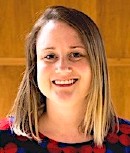
Katie
In this blog post, we (a future teacher and a literacy teacher educator) will share how:
- we define multimodal literacy autobiographies;
- why middle grades teachers should offer their students opportunities to compose these engaging texts;
- ways these types of texts may help middle school students reflect on their literacy practices, and
- five tips for implementing multimodal literacy autobiographies in your classrooms.
Click any of the slides to enlarge them for easier reading.
Multimodal Literacy Autobiographies
Multimodal literacy autobiographies allow individualized reflections upon one’s literacy development using creative media. Within the assignment students select important literacy moments in their lives and document them using print text and pictures.
For example, here is a slide from Erin’s own multimodal literacy autobiography, identifying an important literacy moment during her school days. On this slide, she selected an key academic period of her literacy growth that highlights what she was personally and academically reading in 7th grade. At that time, Erin was engaging with dystopian books which were above her grade reading level.
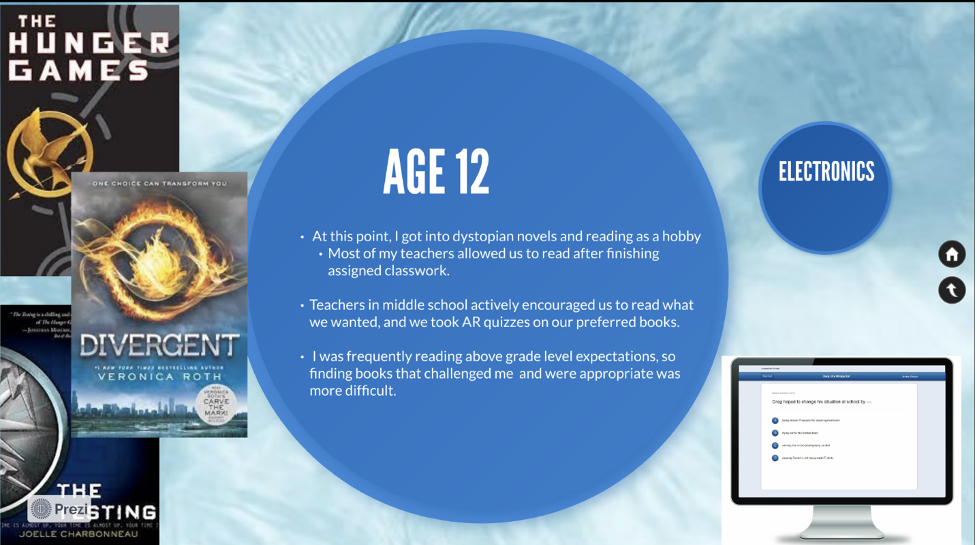
As we reflect on Erin’s love of dystopian literature, we see that she was interested in the idea of books as “sliding doors” (Bishop, 1990) because she was reading about young adults older than her. We also learn that she was able to read books higher than her reading level because she was interested in the subject matter.
Both of these reflections illuminate understandings that can come when students and their teachers create and analyze multimodal literacy autobiographies.
Adopting a Broadened View of Literacy
Another important component of literacy is understanding how it is presented in many different forms. In a broadened view of literacy, we understand that it is not limited to hard-copy books and academic literature but is also expressed through our use of technologies to convey meaning.
Below are snapshots from two multimodal literacy autobiographies that show glimpses of how students engage with digital literacies. The first sample demonstrates Erin’s experience after receiving a Nook, and the second sample shows the budding interest of another student (Brooke) in podcasts. The third sample showcases Brooke’s interest in TV shows.
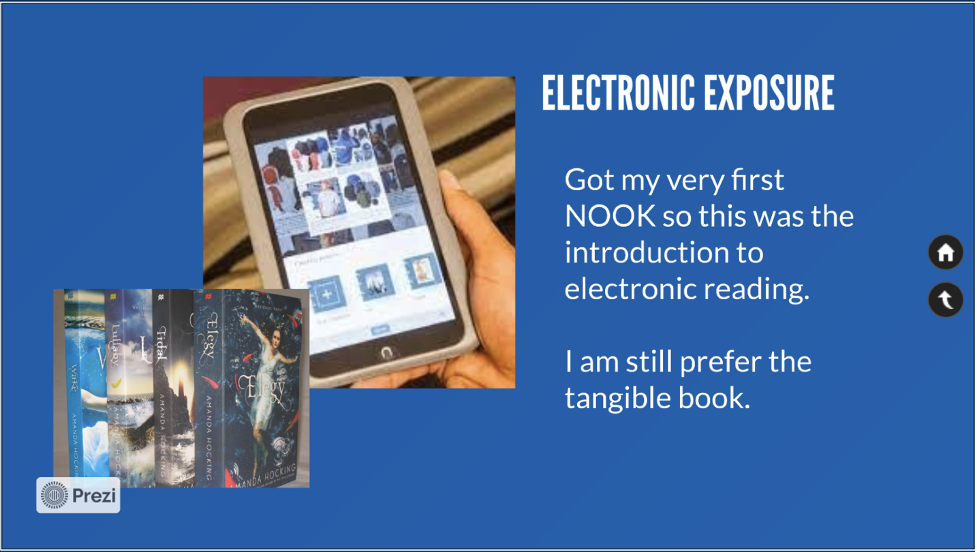
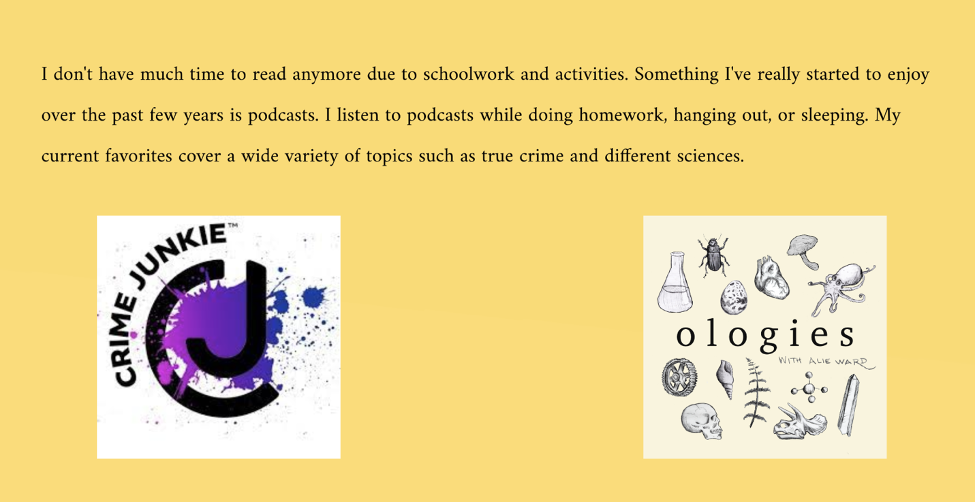
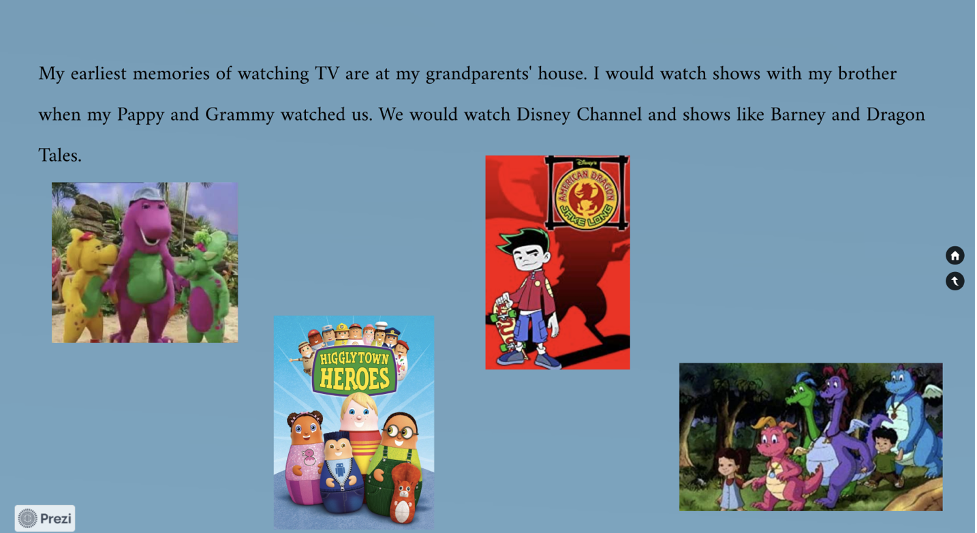
The three figures above emphasize that as students create a road map of their own literacy journey, they can identify moments of personal significance that shaped their understanding of literacy through various digital media (music, television, books, podcasts). Teachers can then use this information to inform their practices.
Why Should We Ask Students to Do This?
Creating an multimodal literacy autobiography encourages students to reflect critically on their previous literacy experiences. Whether these experiences are subjectively “good” or “bad,” the assignment gives insight into how students picked up literacy habits and how they have grown from their literacy experiences. The definition of literacy is also broadened as we ask students to consider the myriad of literacy interactions they have had – from print to texts to podcasts, audiobooks, narrative gaming and more.
Because students are working to understand their literacy roots as they compose their multimodal literacy autobiographies, these assignments provide opportunities to reflect on past experiences and set new literacy goals.
In the snapshot below (click to enlarge), Erin summed up her experiences and highlighted ways she might broaden and deepen her literacy explorations.
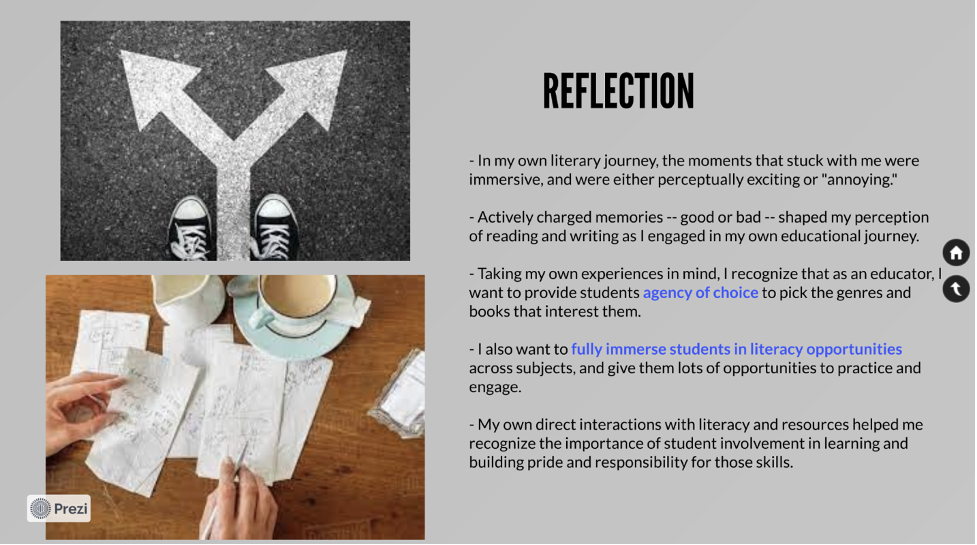
Ultimately, a project like this can help middle graders develop an individual voice doing something enjoyable and personally meaningful – a task that also contributes to their understanding of literacy and sets the stage for students and teachers to establish literacy goals for the semester.
Five Tips for Teachers
► Consider your own literacy journey. In order to be responsive and reflective in our own teaching, it’s important to revisit our own literacy background. Reflect on your literacy experiences growing up and create a mentor text for students to consider. This is a great way to show yourself as a reader and writer to your students at the beginning of the year.
► Provide student examples. Although we want autobiographies to be personal so students can build off their own understandings and experiences, we also want to scaffold students’ work. Whole project examples or sample slides may be helpful.
► Make the project engaging. Give students creative freedom and invite them to use multiple avenues of interaction with academic and non-academic content. Encourage them to think broadly about literacy practices. A self-identified “non-reader” may spend multiple hours reading codes and watching YouTube “how-to” videos for digital games. This student is indeed a reader. Help students understand this.
► Give specific thinking prompt examples. Students should understand that the literacy events they choose to highlight should have been meaningful to their growth. It may be important to give examples as to what ‘meaningful’ means in the context of the autobiography.
A good way to do this would be to offer prompts as students begin brainstorming. Below is a list of sample prompts from Step 1 of the assignment Erin completed as part of her language and literacy course with Katie:
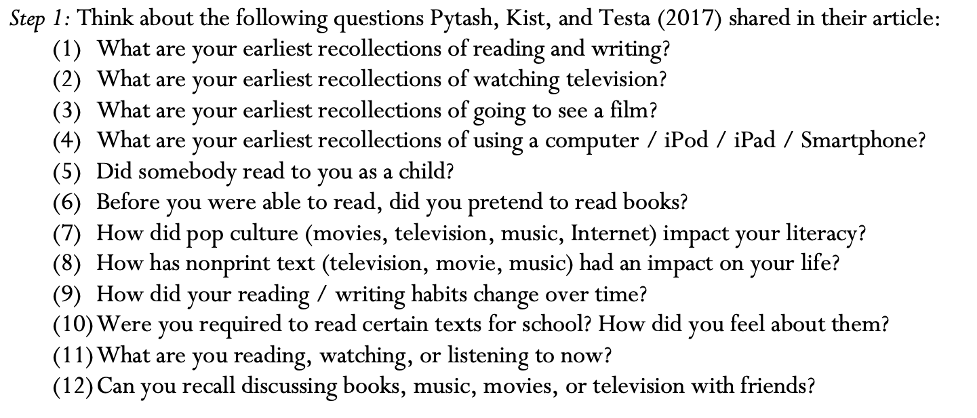
We are hopeful that you can have your students engage in multimodal literacy autobiographies! Please share with us all their good work!
(The authors thank Brooke Seislove for her contributions to this blog post.)
Erin Knauer is a junior Early Childhood Education Major and Music Minor at Elizabethtown College. She excitedly looks forward to having her own classroom and continuing to keep up with the latest educational research.
Katie Caprino is an Assistant Professor of PK-12 New Literacies at Elizabethtown College. She taught middle and high school English in Virginia and North Carolina. She holds a BA from the University of Virginia, a MA from the College of William and Mary, a MA from Old Dominion University, and a Ph.D. from the University of North Carolina at Chapel Hill.
Katie researches and presents on children’s, middle grades, and young adult literature; the teaching of writing, and incorporating technology into the literacy classroom. You can follow her on Twitter at @KCapLiteracy and visit her book blog at katiereviewsbooks.wordpress.com.



































